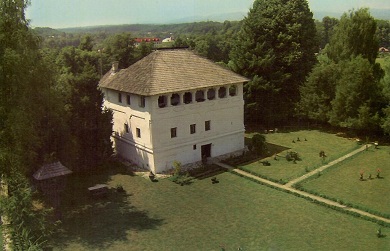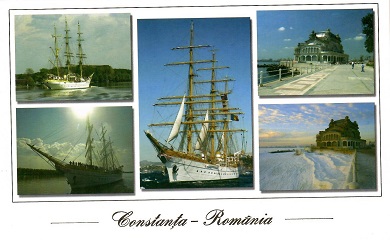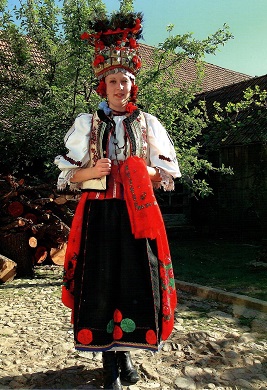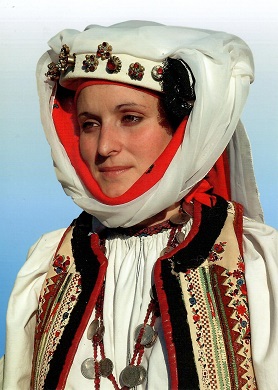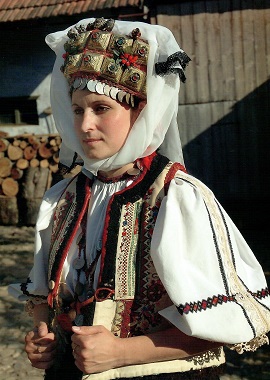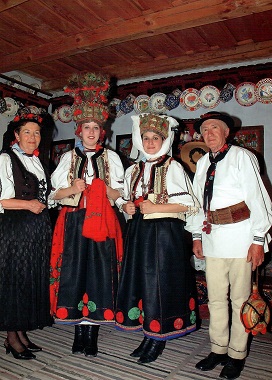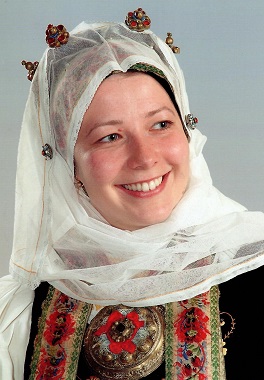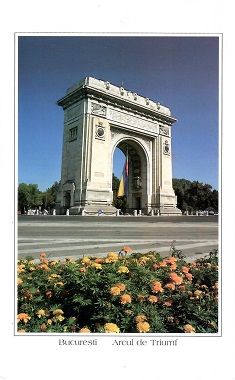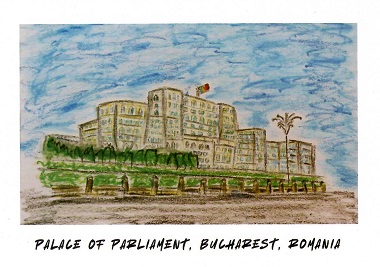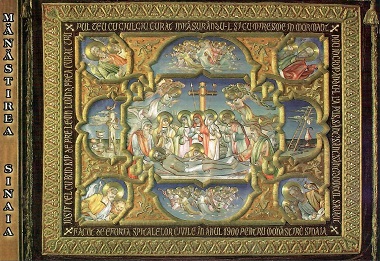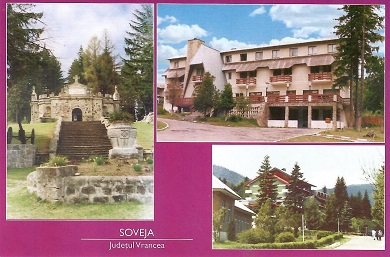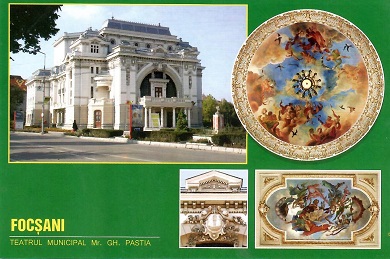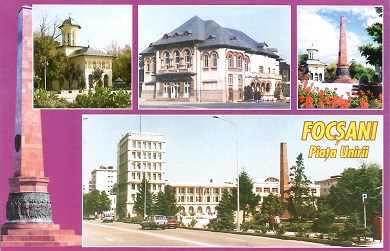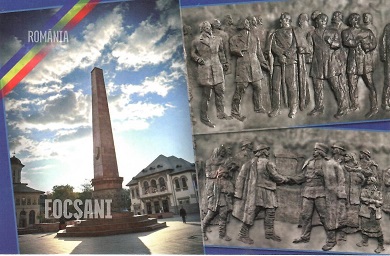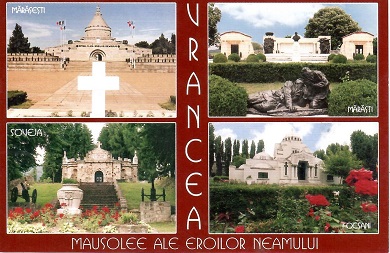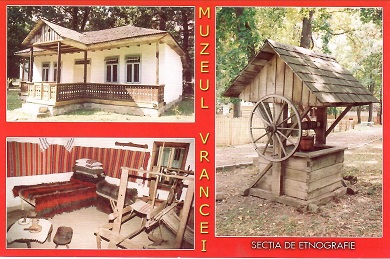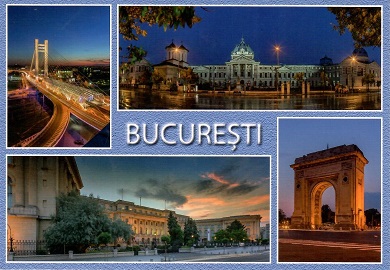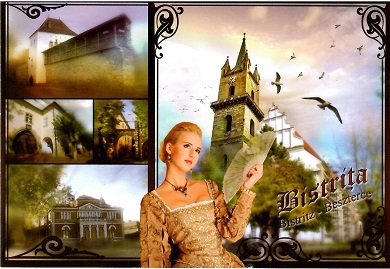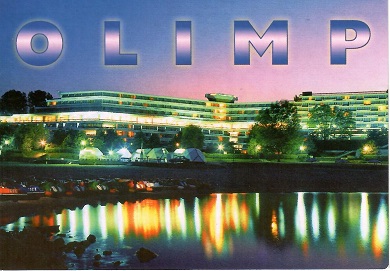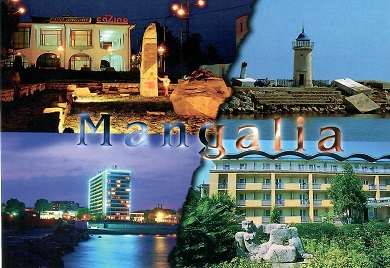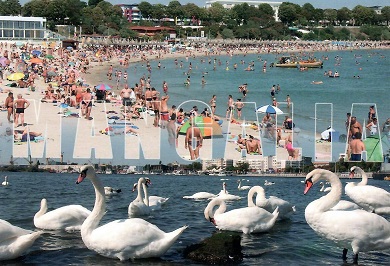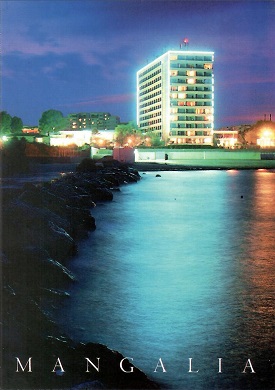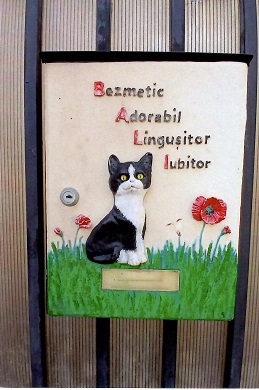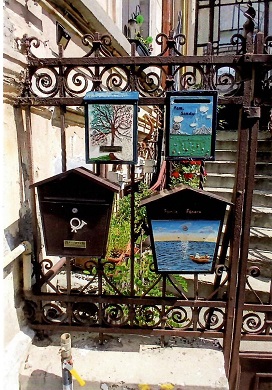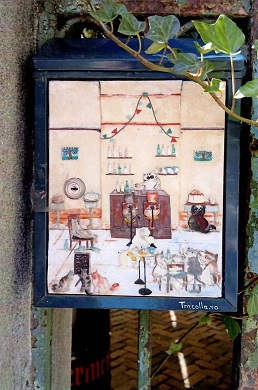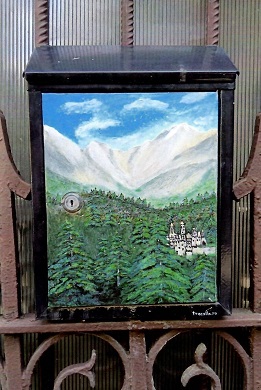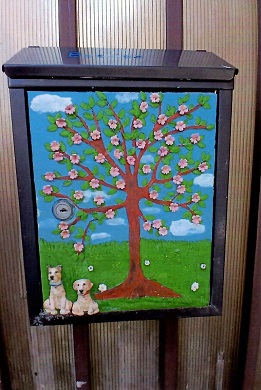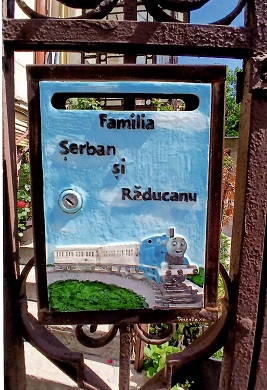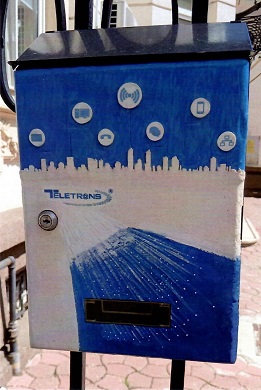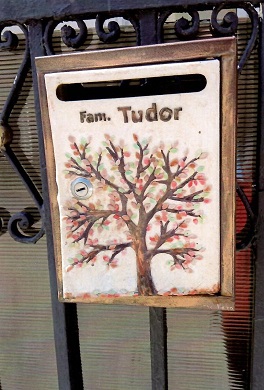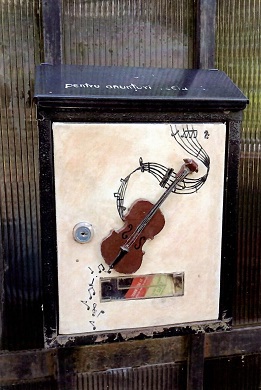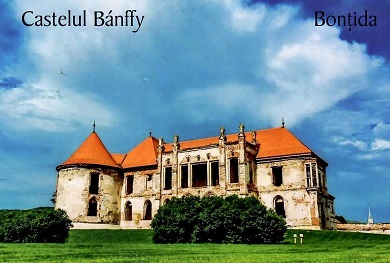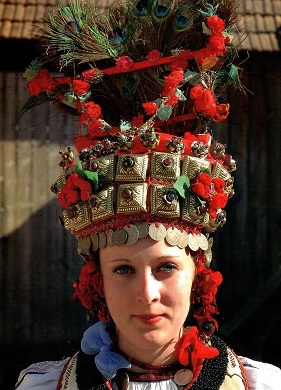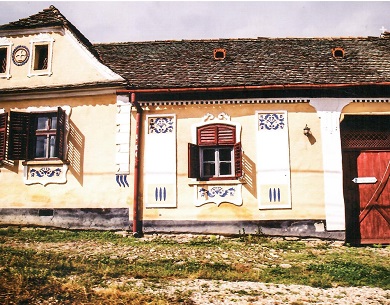-
Cula Duca
We borrow this (abridged) text from a domestic Romanian website: “Built in 1812, the Duca Kula impresses with the massiveness of its walls and astonishingly precise architecture, representing a true landmark of Oltenian architectural style. Located in Măldărești in Vâlcea County, the kula harmoniously integrates into the Măldărești Museum Complex, along with the I.G. Duca Memorial House and the Greceanu Kula, forming a triangle of historical heritage.” Unused card. Grade: 1
-
Constanta, Mircea Brig School Navy and the Casino
Unused. Grade: 1
-
Brașov, Muzeul de Etnografie, Bride
From a series of unused, high-quality, 6″ x 8-1/4″ cards, this photo of a bride after a wedding in Rupea County. An extensive caption in Romanian explains much more. Grade: 1
-
Brașov, Muzeul de Etnografie, Wedding Ritual
See entry 20544215 for the general comment on this series. This example shows also part of a wedding ritual, apparently involving needles and a torch. Long Romanian captions. Grade: 1
-
Brașov, Muzeul de Etnografie, Wedding Ritual “Conch”
See entry 20544215 for the general comment on this series. More of the wedding ritual, prepared with the “conch” and the “torch”. Grade: 1
-
Brașov, Muzeul de Etnografie, Wedding Party
See entry 20544215 for the general description of this larger, unused postcard. More of the wedding party, and this may be the groom with a flask of brandy. Grade: 1
-
Brașov, Muzeul de Etnografie, Mesendorf
See entry 20544215 for the general description of this sequence of unused cards. Here is “Saxon wedding ceremonial costume, Mesendorf, Rupea area, the bride the day after the wedding”. She looks happy. Grade: 1
-
Bucuresti, Arcul de Triumf
Looks familiar? Wikipedia as always provides guidance, and we’ve abridged: “Arcul de Triumf is a triumphal arch located on the Kiseleff Road. Designed by Petre Antonescu, it was built in 1921–22, renovated in 1935–36, and renovated again starting in 2014. It commemorates Romania’s victory in the First World War and the coronation of King Ferdinand I and his wife Marie. The first, wooden, triumphal arch was built hurriedly, after Romania gained its independence (1878), so that the victorious troops could march under it.” This card was not postally used but has a sticker and many club signatures on the reverse. Grade: 4
-
Bucharest, Palace of Parliament
Artwork on an unused card. Grade: 1
-
Prahova County, Mănăstirea Sinaia
Unused postcard whose Romanian-language caption reminds us that this monastery is a UNESCO site. Grade: 1
-
Judeţul Vrancea, Soveja
An unused, highly domestic postcard from this scenic area: Vrancea is a county with its seat at Focșani, mostly in the historical region of Moldavia but the southern part, below the Milcov River, is in Muntenia. Soveja is a commune in Vrancea County. It’s beautiful. That will surely help you. Grade: 1
-
Focșani, Teatrul Municipal
Focșani is the capital city of Vrancea County, and here’s an unused “local” postcard. Grade: 1
-
Focșani, Piaţa Unirii
Multiple views of Union Square on this unused, “local” card. Grade: 1
-
Focşani, Union Monument
Bilingual English/Romanian caption on this unused postcard. Grade: 1
-
Vrancea, Nation’s Heroes Mausoleums
Trilingual Romanian/French/English captions on this unused “local” card. Grade: 1
-
Vrancei, Museum, multiple views
Unused card from the Ethnography department of the Museum. (We’ve spelled the town name as it appears on the card.) Grade: 1
-
București, multiple views
The four views include Basarab Bridge, Coltea Hospital, The Royal Palace, and the Arch of Triumph. This card was not postally used but has the colourful signatures of eight members of a Romanian club on the reverse. Grade: 3
-
Bistrita, multiple views
This unused card prominently identifies itself as native to Transilvania, and the five scenes are all identified — in Romanian, in the caption. One is the Evangelical Church. Grade: 1
-
Mangalia, Olimp
Olimp is a summer resort on the Romanian seacoast, on the Black Sea, 7 km north of Mangalia. This card was not postally used but has a message covering the reverse. Grade: 4
-
Mangalia, multiple view
Unused card showing the lighthouse and key buildings. Grade: 1
-
Mangalia, Seaside
Unused. Grade: 1
-
Mangalia, Beach
An unused, large letter postcard in modern style. Grade: 1
-
Mangalia, night view
The unused card (search engine note: Romanian postcard) should identify the building, but doesn’t. Nice card anyway. Grade: 1
-
Mailbox series (A)
We are inferring from an unrelated website on the reverse of the unused card that this is a Bucharest mailbox whose cat (or human) occupant bears the name Bezmetic, and then the cat is described as adorable, flattering, and loving. Feel free to correct us! Several more mailbox postcards to follow. Grade: 1
-
Mailbox series (B)
We admire the creativity. Unused card. Grade: 1
-
Mailbox series (C)
Another in the series of decorative mailboxes in Romania. Grade: 1
-
Mailbox series (D)
Continuing a series of cards from Bucharest showing local mailboxes. Unused. Grade: 1
-
Mailbox series (E)
It almost looks like cherry blossoms on this Bucharest mailbox, though that’s unlikely. The dogs look happy, though. Unused card. Grade: 1
-
Mailbox series (F)
Unused Bucharest postcard of yet another creative letterbox. Grade: 1
-
Mailbox series (G)
Teletrons looks like the name of a company, but we didn’t find it in search results for Romania. Even AI gave up on us. But it’s another entry in the Bucharest mailbox series. Unused. Grade: 1
-
Mailbox series (H)
The Tudor family’s Bucharest mailbox on this unused postcard. Grade: 1
-
Mailbox series (I)
The violin gives musical life to this musical Bucharest mailbox. Unused card. Grade: 1
-
Bonțida, Bánffy Castle
The colourful and varied history of this castle near Cluj-Napoca dates back to 1387, and among other things it has served as a field hospital, when German troops plundered and devastated the castle; during the communist regime as a driving school, cooperative farm, and hospital for children. In 1963, Bánffy Castle was used as decor for filming Pădurea spânzuraților … the film had a short scene with fire, causing massive damage to the building. In 1990, the castle was declared a historic monument, and since 2013 the castle has been the venue for an annual music festival called Electric Castle, held each July. This card was mailed in 2025, with stamp and two postmarks. Grade: 1
-
Muzeul de Etnografie Brașov
This is a large (6″ x 8-1/4″) unused card that spares the buyer any need to write a message because explanatory captions and descriptions fill the message area. (They could add a few words of greeting.) Grade: 1
-
Bucharest, Casa din Criţ
Sub-captioned in German as “Haus in Deutsch Kreuz”, this is one of those rare postcards we cannot properly describe. What we can say is: it measures 5-3/4″ x 7-1/4″, it’s unused, and it has two stamped “chops” on the reverse, from August and October 2023, commemorating what looks like the first day of something. Googling did not help us at all, except that this may (or may not) now be a museum. We do not downgrade the card because of those chops, nor because we don’t understand it. Grade: 1

